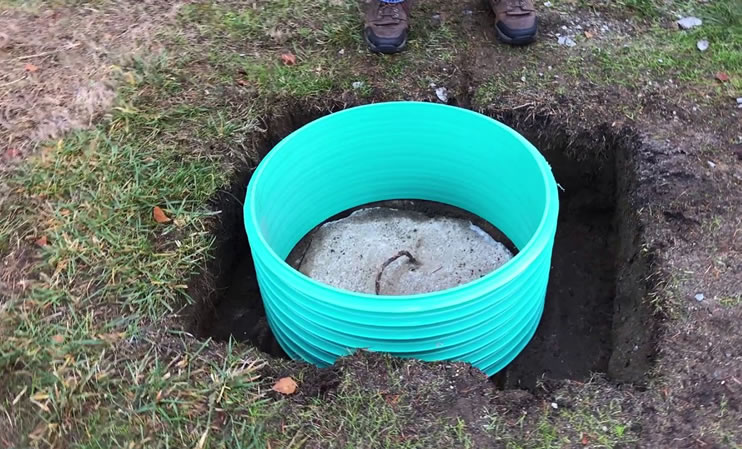WE NOT ONLY PUMP YOUR TANK - WE CLEAN IT! Up to 36 Months Financing Available
Call Septic Blue Now 813-355-9188
It's Easier Schedule Online
WE NOT ONLY PUMP YOUR TANK - WE CLEAN IT! Up to 36 Months Financing Available
Call Septic Blue Now 813-355-9188
It's Easier Schedule Online

Septic tanks require regular maintenance to ensure that they continue to operate effectively, and accessing them easily is key. This is where septic tank risers are utilized. Risers are cylindrical extensions that connect the septic tank to the ground's surface, making it easier to locate and access the tank when service is needed.
In this blog post, our professionals from Septic Blue will look at what septic tank risers are, why they matter, and whether installing one is right for you.
Septic tank risers are generally made from durable materials like plastic, fiberglass, or concrete. Sitting atop the septic tank, these extensions extend to a height that is either at or just below ground level. A riser eliminates the need to dig in order to access the septic tank, allowing for direct access to the tank lid. This simplifies duties such as septic tank pumping, cleaning, and inspections. By streamlining access to the septic tank, risers can make routine maintenance far easier and less costly.
There are numerous advantages to installing a septic tank riser. Initially, it reduces the cost of services and saves time. Without a riser, locating and accessing the septic tank requires digging, which can be both labor-intensive and expensive. With a riser in place, a professional company can locate the tank lid quickly and easily, speeding up routine tasks like septic pumping and septic tank cleaning.
Additionally, risers enhance safety and convenience for homeowners. Since they bring the tank access point to ground level, they reduce the risk of damage to the lawn or landscaping during maintenance. They also make it easier for you or your septic technician to check the system for any potential problems, such as leaks or cracks, that may require septic tank repair.
When choosing a septic tank riser, it’s essential to understand the different types available. Risers are commonly available in three materials: plastic, fiberglass, and concrete. Each material offers its own set of benefits.
Septic systems are designed to handle a specific volume of…
Read More+Unlike public sewer systems, your septic tank has a limited…
Read More+Winter is approaching, which means homeowners should pay more attention…
Read More+Choosing the right type of riser will depend on factors like budget, longevity, and appearance. A septic company can assist you in determining the most appropriate material for your landscape and system.
Whether or not you need a riser will depend on your individual situation. Risers are especially beneficial if you live in a region that experiences frequent freezing or have a system that requires frequent access. Homeowners who conduct routine septic pumping or cleaning may also find risers to be particularly beneficial, as they improve the process and reduce labor expenses.
For new installations, it’s often a good idea to include a riser from the start. This guarantees that the system will be accessible without the need for further excavation in the future. However, even for existing systems, adding a riser is a worthwhile investment that could save you money on maintenance over time. Consult with a reputable septic company to determine whether a riser is a practical addition to your system.
The installation of a septic tank riser is usually straightforward, though it may be best to hire a professional. A septic business can guarantee that the riser is installed securely, thereby preventing any leakage or other complications. Minimal maintenance is necessary for risers after installation; however, they should be inspected periodically for evidence of wear or cracks. Properly installed risers can last many years with little maintenance, providing easy access to the septic tank for future septic services.
Is septic tank installation a service you’re looking for? Luckily, we at Septic Blue have dedicated workers ready at your disposal. Contact our representatives for more questions.